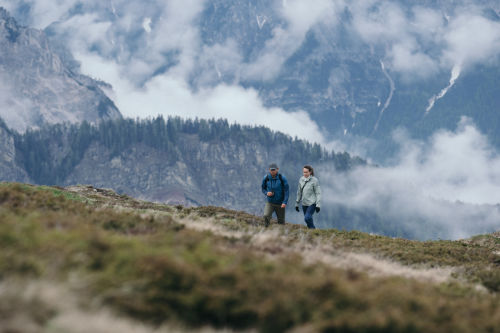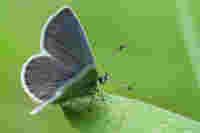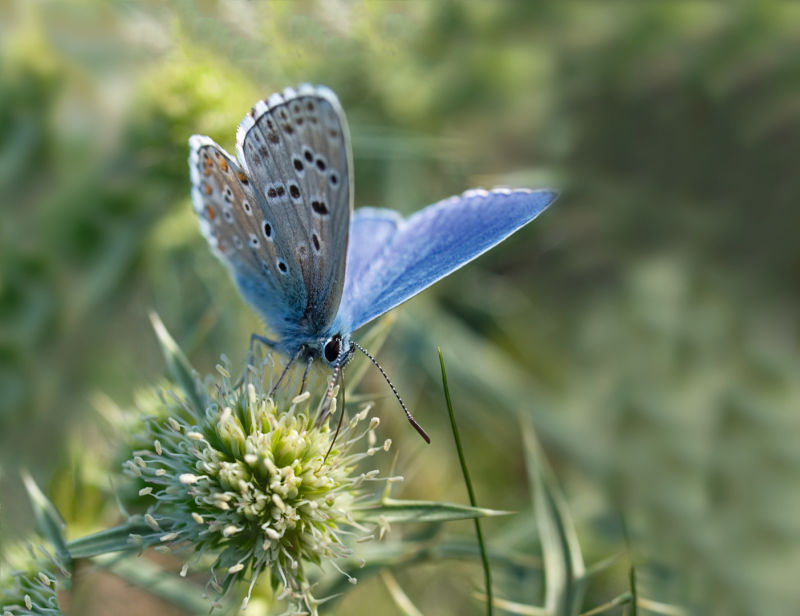Spring and summer are by far my favourite months of the year when it comes to enjoying my garden for wildlife. No two days are ever the same. One day I’m mesmerised by butterflies and day-flying moths gliding among the brightly coloured flowers seeking out that all-important nectar, the next I’m gleefully watching garden birds like the Blue Tits adding moss and lichen to their nests in one of my many nest boxes. While the world seems green and full of life, there are plenty of opportunities and ways to make our gardens even more suitable for wildlife during these peak periods of wildlife activity. So, here are my favourite easy ways to make your garden WILD for wildlife.
1. PROVIDING HOMES FOR BIRDS AND OTHER WILDLIFE
Many bird species rely on us for nesting locations. There are several species in decline because of the lack of nesting opportunities and due to gardens becoming unsuitable for species to nest in – but we can counter that by adding various nesting opportunities in our gardens. They are very simple to install and can be provided no matter whether you have trees, fences or stone walls. The ideal location is in the north-east of your garden, but nestled among vegetation, on house eaves or in your shed are also great locations for nesting homes for garden birds.
There is a variety of different styles on offer and some that are specifically designed for species that we should be accommodating in our gardens.

TRY SOMETHING NEW
ROOSTING POCKETS
These are relatively new to the wildlife market but they’ll make a great addition to your garden, particuarly when nestled among trees, shrubs and around your garden shed.

PROVIDE DIFFERENT HOLE SIZES
NEST BOXES
There are so many unique nest box designs on the market but the most important element to look at is the hole size. 25 mm is ideal for your small species (Tree Sparrow, Blue Tit) and 32 mm for your medium species (Marsh Tit, Pied Flycatcher, Great Tit, House Sparrow).

FOR BIGGER GUESTS
BASKETS
If you think you have sufficient space for smaller birds but are looking to encourage other species, there are options such as nesting baskets for thrushes including Blackbirds and Song Thrushes.

INVITE MORE THAN JUST BIRDS
WELCOME HEDGEHOGS, TOADS AND SQUIRRELS
It’s not just birds that can benefit from our home gardens. We can also create diverse spaces for other species of wildlife such as hedgehogs, toads and squirrels, which also need areas in our gardens but often go unnoticed as species that could do with our help. That being said, one of the best creations to add to your garden for the spring and summer months is a nature pond.
I know many of us have limited space, but fear not! Even adding a patio pond is a great way to establish a different habitat that will benefit aquatic and semi-aquatic creatures in our gardens. And it’s really easy:
Use a washing up bowl, an old sink or a tyre to create your pond base.
After adding some stones to one side, start to add in your water.
Now it’s time to add some plants: my favourites are water crowfoot, water mint and marsh marigold.
Find a good location for your pond: I have mine in a shaded area of my patio with some stones around it so the frogs and newts can get in and out safely.
2. PLANTING FOR SPRING AND SUMMER WILDLIFE
Plants are a vital source of food and water for a variety of different creatures. Whether you’re looking to provide late summer seeds for birds, or want to provide nectar and pollen for a range of insects – there is a huge number of plants to choose from. One thing people often forget to do when purchasing or growing plants is to have a variety, which means a variety of:
Flower petal shapes
Flat flowers are good for butterflies, whereas bell-shaped ones are good for bumblebees.Colours
Some creatures cannot see certain colours, such as bees.Flowering times
Not every creature feeds during the day so we need pollen for moths, too.Seasonal times
We want to ensure there are flowers in spring, summer and late summer.Heights
Creating layers for different creatures is important.

Here are some of my absolute favourite plants that are suitable for a number of the categories listed above, but also for planting both in a flower bed and in a pot.
Easiest to plant, variety of head shapes and hardy nectar-rich plants:
Lavender
Buddleja
Foxgloves
Bluebells
Daffodils
Cornflowers
Hellebores
Snowdrops


Nocturnal plants for moths and evening insects:
Evening Primrose
Tuberose
Night Phlox
Jasmine tobacco (Nicotiana alata)
Night Gladiolus
Night Scented Orchid

HEAVILY SCENTED SHRUB/FLOWER
LAVENDER
This heavily scented plant is a mix of shrub and flower, easy to grow, needs to be pruned annually to keep it compact, tolerant to drought, provides a good food source for pollinators and also thick coverage for ground-feeding birds.

ONE OF THE HARDIEST SHRUBS
AUCUBA
This is one of the hardiest shrubs, prefers shade, tolerates any soil, is perfect for some nesting birds but also a good safe zone when foraging.

A GOOD SPACE SAVER
CAMELLIAS
These can be grown on trellises, and different varieties have different blooming times. They require partial shade and well-drained soil. They are a good space saver and provide shelter and a nesting site.

EASY TO GROW
HOLLY
Holly provides refuge from predators and produces winter berries, while it tolerates any soil and is easy to grow.
3. PROVIDING SOURCES OF WATER
Water is vital. Not only is it necessary for living creatures to drink it, they also need it to remain clean, as many creatures, including birds and mammals, use it to remove bacteria and mites from themselves.

FOR HEALTHY FEATHERS
WATER FOR BATHING
Some creatures prefer a dust bath in an area of dry soil, but the majority use puddles, dishes and shallow bird baths to bathe in. Providing a shallow bird bath or a sloping bird bath, perhaps alongside a pond, will enable creatures to bathe naturally. Healthy feathers and fur mean a healthy animal, and water helps with this by softening and removing any debris.

DURING HOT SPELLS
WATER FOR DRINKING
During hot weather or in areas where water is scarce, birds and mammals turn to our gardens for water in ponds, bird baths and dishes. Creatures do get water from plants and dew in the mornings but a good, clean and accessible water source for creatures in our gardens is just as important as providing food and nesting sites.
You need to consider where to position your water, as creatures will weigh up the risk of predation or unsafe environments against the need to drink. The safer the water appears, the more likely the creatures are to use it. Likewise, looking at your accessibility is important, as many bird baths are raised, making them inaccessible for hedgehogs and frogs.

About the author
Dan Rouse
Dan Rouse is a presenter, ornithologist and author from Swansea, Wales. She has written several books on garden wildlife with DK Books including How to attract Birds to your garden and How to attract Wildlife to your garden whilst also sharing her passion for wildlife through online content, magazine pieces and talks. Dan currently runs Tadorna Tours and Tadorna Wildlife which aims to bring people closer to wildlife through educational activities and wildlife holidays. @DanERouse www.danrouse.org.uk















